Diabetes treatments
The treatment for diabetes will depend on the type of diabetes that you have.
Besides taking medicines, generally it is recommended that all people with diabetes follow a healthy lifestyle. This includes choosing healthy, nutritious foods in moderation and doing regular physical activity.


In regards to your food and drink choices, we recommend that you follow the advice from the Australian Guide to Healthy Eating.
This includes eating a wide variety of nutritous foods from the 5 food groups, drinking plenty of water, and limiting your intake processed foods and beverages, including alcohol.
The glycaemic index is a ranking system tht classifies carbohydrate foods by their effect on blood glucose levels. Read more here.
Exercise is one of the most effective ways to manage diabetes. This is because your body uses glucose as a source of energy. The more active you are, the more energy you burn.
Exercise also helps your body to soak up glucose when you are not active. This means that the benefits of exercise outlast the acual physical activity. The physical activity factsheet by the National Diabetes Services Scheme (NDSS) outlines details of the types of exercise, the duration and intensitiy that are recommended.
Oral diabetes medications (tablets)
People with type 1 diabetes will have to rely on insulin injections.
For the treatment of type 2 diabetes there are a lot of different medications.
Current groups of oral medications available in Australia include:
- Metformin
- Sulphonylureas
- DPP-4 inhibitors
- SGLT-2 inhibitors
- GLP-1 receptor agonists
- Alpha-glucosidase inhibitor
- Thiazolodinediones
- Combination medications
More information on these will follow in the future. For now, you may like to review the NDSS Medications for type 2 diabetes factsheet.

Multiple medications
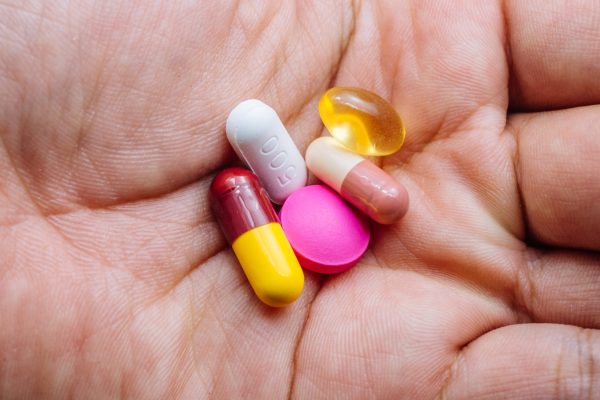
In most cases, particularly in the treatment of type 2 diabetes, your doctor will recommend a combination of different medications for the treatment of your condition.
These may be different medications to treat diabetes specifically, but can also be a combination of glucose lowering medications with blood pressure and/or cholesterol lowering medicines, or other health conditions.
It is important to note that medications do not replace the need for a healthy eating plan and regular physical activity.
It is important to always take all your medications as prescribed.
If you have any concern about your medications, or if you experience side-effects, speak to your doctor or pharmacist before making any changes.
Injectable medications
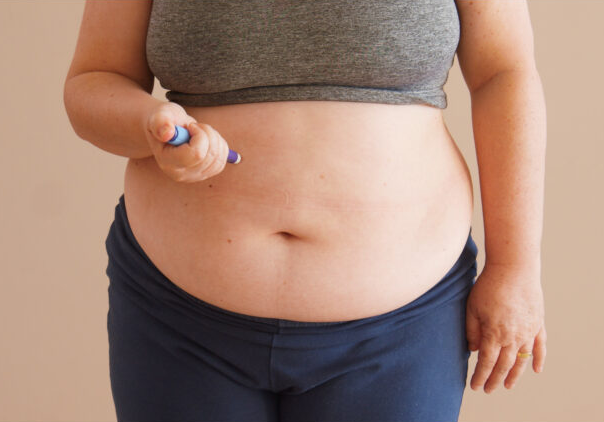

When using injectable diabetes medications, it is important to use the right medication, in the right amount, using the right technique and the right device.
There are currently 2 types of injectable medication available in Australia for the treatment of diabetes: Insulin and GLP-1 receptor agonists.
GLP-1 Receptor Agonists
Contrary to popular belief, insulin is not the only injectable medication for diabetes.
There is a group of medications called Glucagon-Like Peptide-1 Receptor Agonists (GLP-1RA, often just called GLP-1 for short) and these are also injectable medications.
Your body produces GLP-1 (which is an incretin, a particular type of, hormone) when you eat. GLP-1 stimulates your pancreas to produce insulin, which in turn reduces your blood glucose levels. GLP-1 also stops you feeling hungry, as it slows stomach emptying.
Research has found that levels of GLP-1 can be decreased in people with diabetes. GLP-1 medications aim to replace the GLP-1 that your body no longer produces. The different type of GLP-1 medications available in Australia for the treatment of diabetes include:
- Semaglutide, known under the brand name Ozempic®, once weekly
- Dulaglutide, known as Trulicity®, once weekly
- Liraglutide is a daily injection and is available under the brand name Vyctoza® for people with diabetes and under the brand name Saxenda® for weight management. Liraglutide is only available on private scripts.
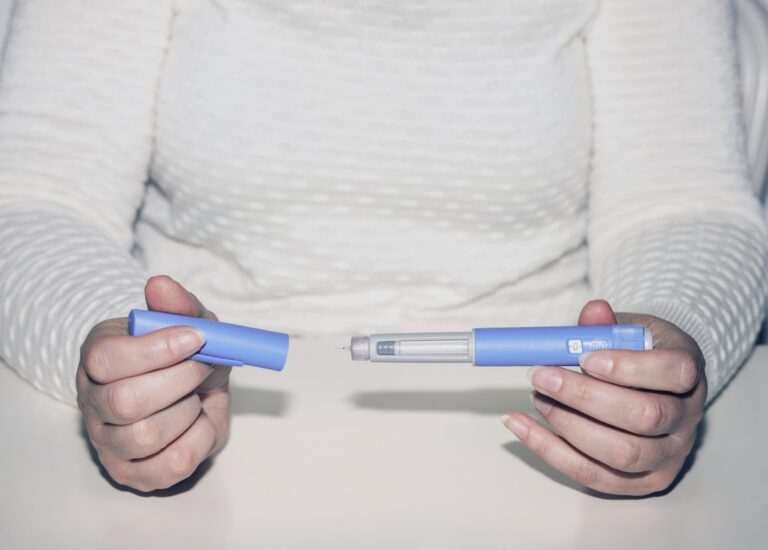
Combination treatments
Tirzepatide, known as Mounjaro in Australia, is a combination medication that is available in Australia on private prescription since September 2023.
Mounjaro is known as a ‘dual long-acting GLP-1 and GIP receptor agonist’. This means that it contains the active component GLP-1 (described above) as well as Glucose-dependent Insulinotropic Polypeptide, or GIP, which is another incretin hormone. Naturally occurring GIP is produced in our intestines; its role is to stimulate insulin production by the pancreas and to delay gastric emptying.
Mounjaro, although available in prefilled, disposable pen devices overseas, is currently only available in Australia in vials of 2.5mg/0.5ml, 5mg/0.5ml, 7.5mg/0.5ml, 10mg/0.5ml, 12.5mg/0.5ml and 15mg/0.5ml, to be injected weekly, using a U-100 insulin syringe. Syringes are available for free through the National Diabetes Services Scheme (NDSS) for people registered as needing injectable medication. Prescriptions are available through endocrinologists and GPs nation-wide.
If you are prescribed Mounjaro, contact Carolien to learn how to draw up and inject this medication safely, and to learn how to dispose of the syringes.
Insulin injections
Insulin is the most commonly used injectable medication for the treatment of all kinds of diabetes, including type 1, type 2, gestational diabetes and steroid-induced diabetes.
Each insulin producing company has their own devices. Using a device from one company with insulin from another company is generally not recommended as this can affect the effectiveness of the device.
There are currently 3 companies that produce insulin for the Australian market:
- Eli Lilly
- Novo Nordisk
- Sanofi
Disclaimer: The following reusable pen devices are available through the manufacturers. We provide education only.
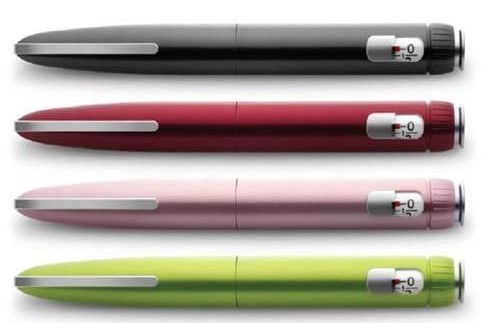
Example of a Lilly insulin pen
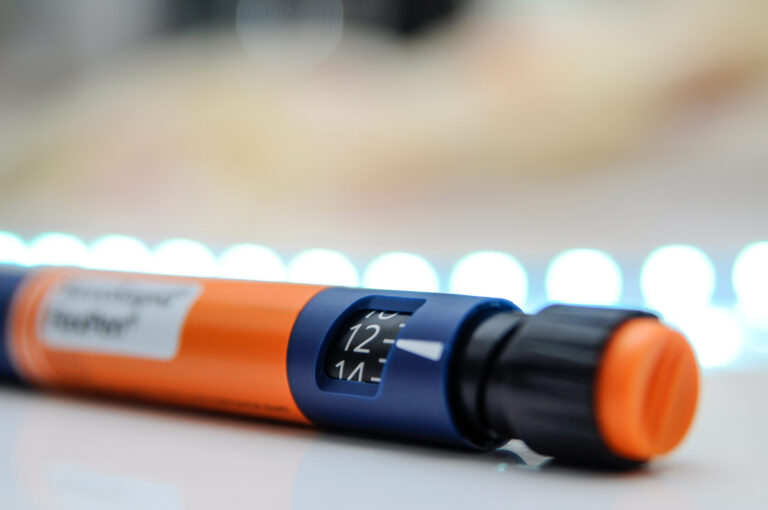
Example of a Novo Nordisk insulin pen
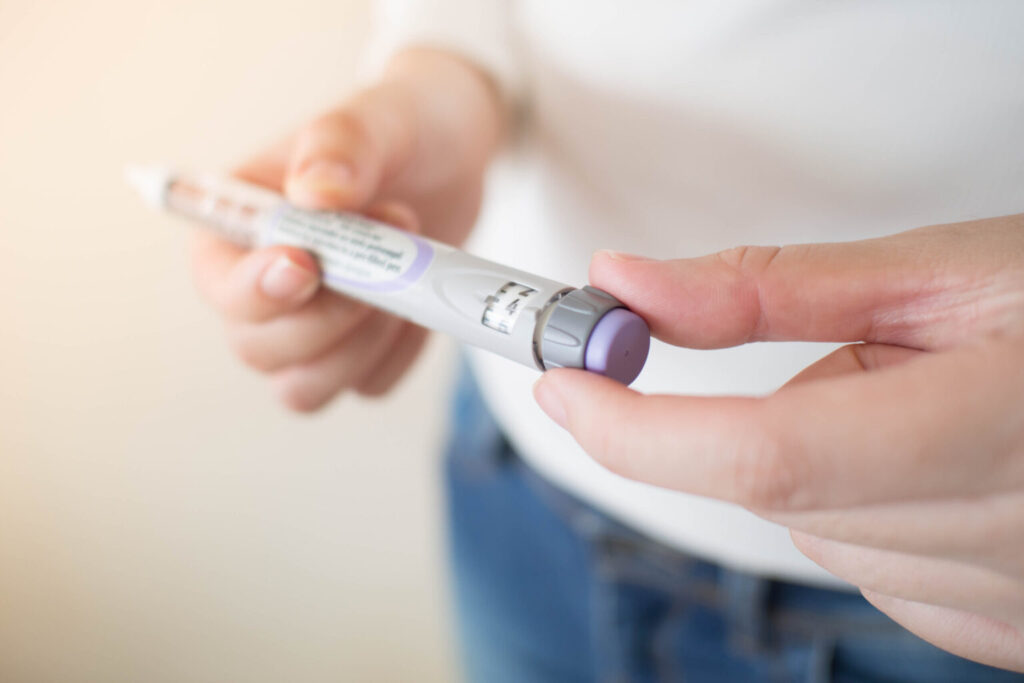
Example of a Sanofi insulin pen
Lilly Diabetes insulin products currently available in Australia include:
- Humalog®
- Humalog® Mix25
- Humalog® Mix50
- Humalog® U200
- Humulin® R
- Humulin® NPH
- Humulin® 30/70
Lilly Diabetes insulin is available in:
- 3ml cartridges for use in the Humapen®, Humapen Savvio®
- The disposable 3ml Kwikpen® device
- 10ml vials
Novo Nordisk insulin products currently available in Australia include:
- Actrapid®
- Fiasp®
- Levemir®
- Mixtard® 30/70
- Mixtard® 50/50
- Novomix® 30
- Novorapid®
- Protaphane®
- Ryzodeg® 70/30
Novo Nordisk insulin comes in:
- 3ml Penfill® (cartridges) for use with the Novopen® 4, Novopen® Echo® or Novopen® 6 pen devices
- 3ml Flexpen® disposable pen device (Levemir®, Novomix® 30, Novorapid® only)
- 3ml Flextouch® disposable pen device (Fiasp® and Ryzodeg® 70/30 only)
- 3ml Innolet® disposable pen device (Protaphane® only)
- 10ml vials
Sanofi insulin products currently available in Australia include:
- Apidra®
- Optisulin®
- Toujeo®*
Sanofi insulin comes in:
- 3ml cartridges for use with the ALLSTAR®, ClikStar® and JuniorStar® pen devices
- The disposable 3ml Solostar® device
- 10ml vials
*Please note: that Toujeo® is a U-300 insulin. This means that Toujeo® has 300 units of insulin glargine per ml, compared to most other insulins that are U-100 and have 100 units/ml.
Toujeo® should always only be administered using the prefilled, disposable injector pen it comes in, as otherwise you may get three times the dosage you intended to inject.

To learn more about how to self-inject diabetes medications watch this video.
If you care for a person with diabetes who requires injectable medication watch this video.
If you are a healthcare professional wanting to learn more about injecting diabetes medications, you may want to check out this webinar with information on:
- Correct injection techniques for administering insulin
- Lipohypertrophy
- The importance of Safety engineered devices (SEDs)
Although all these resources are linking you through to another website, that of Diabetes Qualified, a sister company of Diabetes Australia, they feature our very own Carolien Koreneff, a very experienced credentialled diabetes educator.
